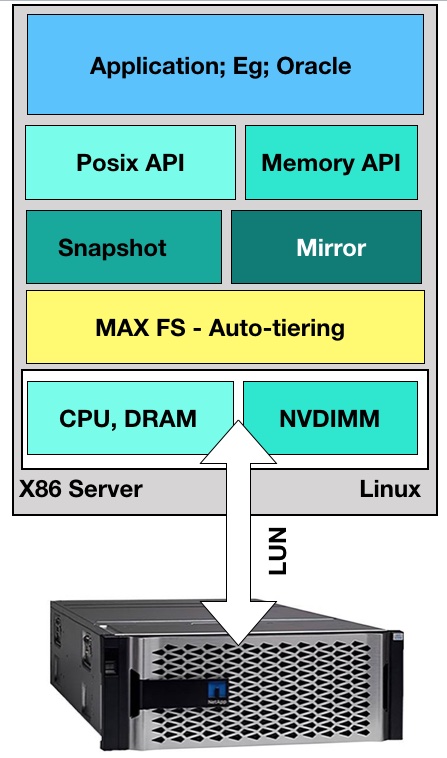NetApp’s updated v1.3 MAX Data supports new Intel Xeon CPUs and Optane DC Persistent Memory in the host servers to which it feeds data from ONTAP arrays.
Optane DC Persistent Memory is 3D XPoint media installed on DIMMs. It is also known as storage-class memory, and MAX Data combines it with the host server’s DRAM to provide a unified data store. NetApp says it helps customers use their data without having to redesign their critical applications.

NetApp said last year that MAX Data supported Optane DIMMs, but they were not available when that was stated. Now they are becoming available, along with new Xeon processors.
Jennifer Huffstetler, VP and GM of Intel’s Data Center Product Management and Storage, said in a canned quote: “With the second generation of Intel Xeon Scalable processors and Intel Optane DC persistent memory, customers can discover the value of their stored data. By working together with innovative companies such as NetApp, we can move, store and process more data.”

Up until now Intel has talked about its Cascade Lake Xeon CPUs with the 2-socket AP version having explicit Optane DIMM support and the standard version thought to have the same support, albeit without a unified memory controller. Now Intel is using the term ‘second generation’ to describe its Optane DIMM-supporting Xeon CPUs.
NetApp says MAX Data is the first enterprise storage solution in the market that uses Intel Optane DC persistent memory in its servers for storing persistent data. Blocks & Files thinks it won’t be the last.
Note: See NetApp press release here.








